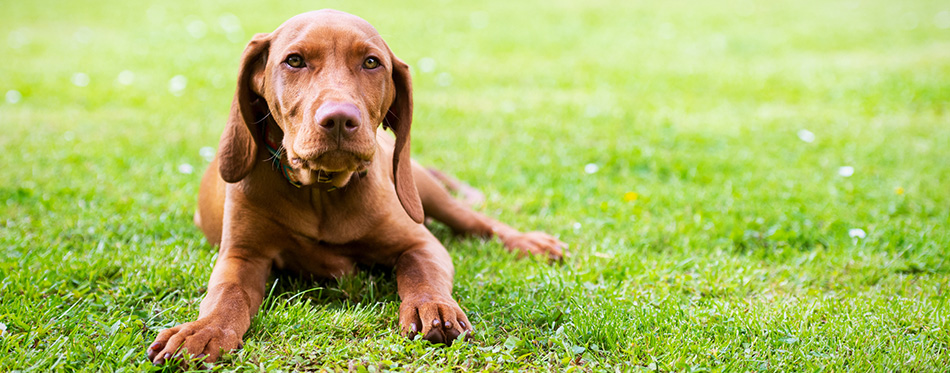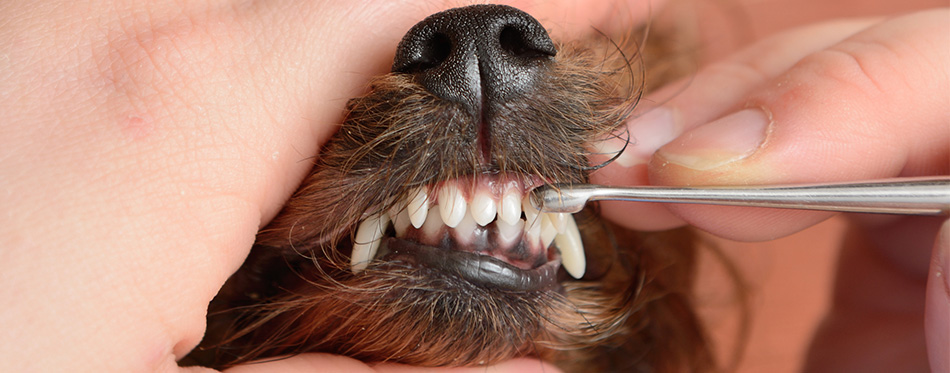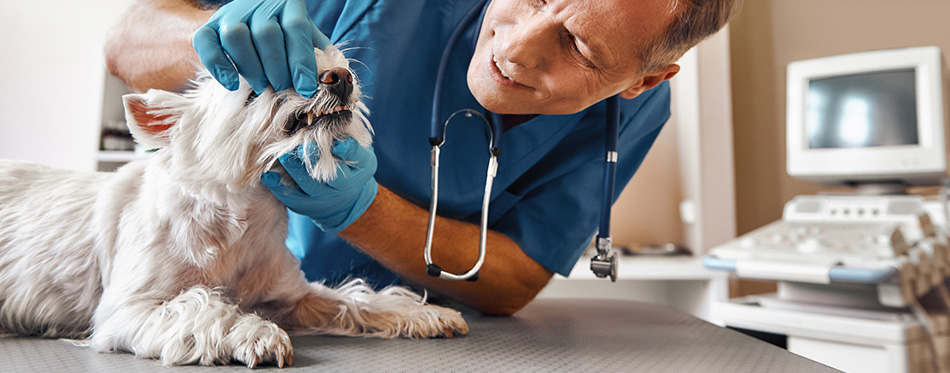A broken tooth in a dog is just as painful as it can be in a human, only the poor things have no way of telling us. As dog owners we need to know what the signs are of a broken tooth in pups as well as learning what the best method is to treat it once it has been identified.
Here we look at the steps that should be taken for identification followed by tips on how to treat a broken tooth in dogs. It’s good for all dog owners to read as it will enable them to keep their dogs in fit and healthy condition as well as in minimal pain.
We also look at the best dog toothpaste and dog toothbrush for our pooches as, ultimately the best way to treat a dog’s broken tooth is by preventing it breaking in the first place. To do so requires excellent oral hygiene for your dog which entails regular toothbrushing with a suitable, specially made dog toothpaste.

Steps to Identify a Broken Tooth in Your Dog
Without doubt the best way to treat a dog’s broken tooth is made all the more effective the earlier it is identified. This isn’t always easy as dogs are good at just getting on with things and have been known to eat on a broken tooth for weeks if not months on end.
Ways that help with early identification:
- Look regularly
Checking in our dogs’ mouths should be something we do regularly and can help us identify any sources of pain for them, whether it is a broken tooth or not. Better still, check your dog’s mouth while you are brushing his or her teeth. By looking regularly, you’ll not only find any sources of discomforting earlier, you will also grow to know what your dog’s mouth looks like when it is healthy so you will see any strange changes more easily too.
- Find sources of infection
By giving your dog’s mouth a thorough inspection repeatedly, you will be able to identify sources of infection which is crucial to their oral hygiene. Given that gum disease can develop into far more serious issues, it is essential that owners take responsibility for finding infections quickly – especially ones that start with or even cause a broken tooth.
- Is there any swelling?
When checking your dog’s mouth, ask yourself, is there any swelling? If you are unsure, keep a close eye on it for a couple of days at the very most to see if it worsens. If it does, your dog could have an infection in his or her mouth.
- Is your dog drooling?
One symptom of a broken tooth is if your dog is drooling excessively. If he or she is, and it is uncharacteristic for them or their breed, check inside their mouths for any further signs of infection.
Take a look at our review of Dog Dental Spray for more options.

What to Do If Your Dog Has a Broken Tooth
- Go to the vet
If you find any sources of infection or even see that one of your dog’s teeth is broken, it is advisable to take your dog straight to the vet. There, the tooth or the infection can be inspected properly by a healthcare professional who will have seen instances of broken teeth very commonly.
Plus, your vet will be able to assess how bad the break is and where it has started from. It could be a very minor break or it could be that the tooth has actually fractured all the way down into the gum through the root.
Once your vet has identified the extent of the problem, they will then be able to determine the best course of action. They will often take an x-ray to see how badly, if at all, the root and gums are hurt by the break or fracture. It could be that the tip of the tooth has broken off which leaves the tissue below the tooth enamel exposed. This can be exceedingly painful for your pup and can cause further cavities to develop. Your vet will be able to assess if this is the case.
- Go to a specialised veterinary dentist
Depending on the level of experience of your vet, but also the level of infection or break in your dog’s teeth, it is sometimes advisable to go to a veterinary dentist for treatment – especially if your dog’s tooth is very badly fractured and infected. Don’t be afraid to ask your regular vet if they have performed many oral surgeries to gauge whether this is necessary or not.
- Ask about tooth sealing
Tooth sealing is an option in how to treat a broken tooth in your dog if the break has not had an impact on the root of the tooth or even the gums. It is often only a procedure carried out by a specialised veterinary dentist. If it is, indeed, an option they will take an x-ray of your dog’s tooth and jawline to see if the tooth is even still alive. It is only if it is that they can seal the tooth using a sealant that prevents any further infection from harmful bacteria.
- Discuss the option of a root canal procedure
A root canal is an option if the tooth has been broken below your dog’s gum line. If this is the case, the procedure can actually help save a tooth that is fractured. The reason being is that through the process, any infected tissue is discarded and the vet can go on to seal the teeth and then sterilise the area to prevent further infection.
If it’s possible, a root canal is a good option as it can stop the need for your dog to go through a surgery and its traumas. However, your pooch will still have to have an anaesthetic for a root canal so it is not without its dangers. Plus, if your dog is not yet older than 18 months old, your vet may suggest holding off on the procedure so that their very root canal can grow to a big enough size to be a worthy candidate. For the canal to grow, your vet will prescribe pulp therapy that will help keep the tooth alive long enough for the final root canal procedure to be viable.
- Consider whether tooth extraction is needed
Vets only really suggest tooth extraction if your dog’s tooth is very badly fractured or infected. It is often seen as a last resort owing to the depth and size of a dog’s tooth root. As they are so big, the surgery required for extraction is invasive and painful. It can also go on to affect your dog’s ability to eat as it can upset their chewing technique.
- Shower your dog with love after any procedure
Whilst the severity and invasiveness of the surgery may vary, your dog will still need some aftercare following having his broken tooth fixed. Your vet will give you detailed instructions along with pain relief and further medication for them, but be sure to ask any questions should you have a query.
Tooth sealing or root canal procedures are commonly more quickly recovered from – with dogs often seen eating on the same day. However, any anaesthetic may still be in their system and some dogs will be sick or behave dopily for a little while afterwards.
For a tooth extraction, the recovery is much slower. Your dog will need to be given specialised pain killers and drugs to help keep further infection at bay. As its owner, you will need to monitor the wound to ascertain how it is doing and whether it is healing properly.

Prevention Is Key
A broken tooth is painful for your dog, but we can help prevent them by using brushing their teeth. In any pet store there will be a section devoted entirely to maintaining a dog’s oral hygiene.
Investigate buying a dog toothbrush that is suitable to a dog’s breed, size and jaw. For example, a dog toothbrush made for a chihuahua is not at all suitable for a labrador. Instead, buy specialised brushes according to your dog’s needs. Buy a dog toothpaste too that will help keep your dog’s teeth clear of tartar and plaque that can cause gum infections. Dog toothpastes have meaty flavours that appeal to our canines so do not be tempted to use your own minty fresh brand.
Finally, look at other chew toys and rawhides that can help keep plaque from your dog’s teeth too. They have the happy result that they keep your dog busy so away from any destructive behaviour caused by boredom. It’s a win win situation! Check out our guides on the best chew toys for puppies and rawhide for dogs.
Brushing your dog’s teeth with a dog toothbrush will take time and practice, but it is well worth it if we can save them the pain of an otherwise unnecessary tooth extraction further down the line.
Source:
- Tooth Fracture in Dogs – PetMD

